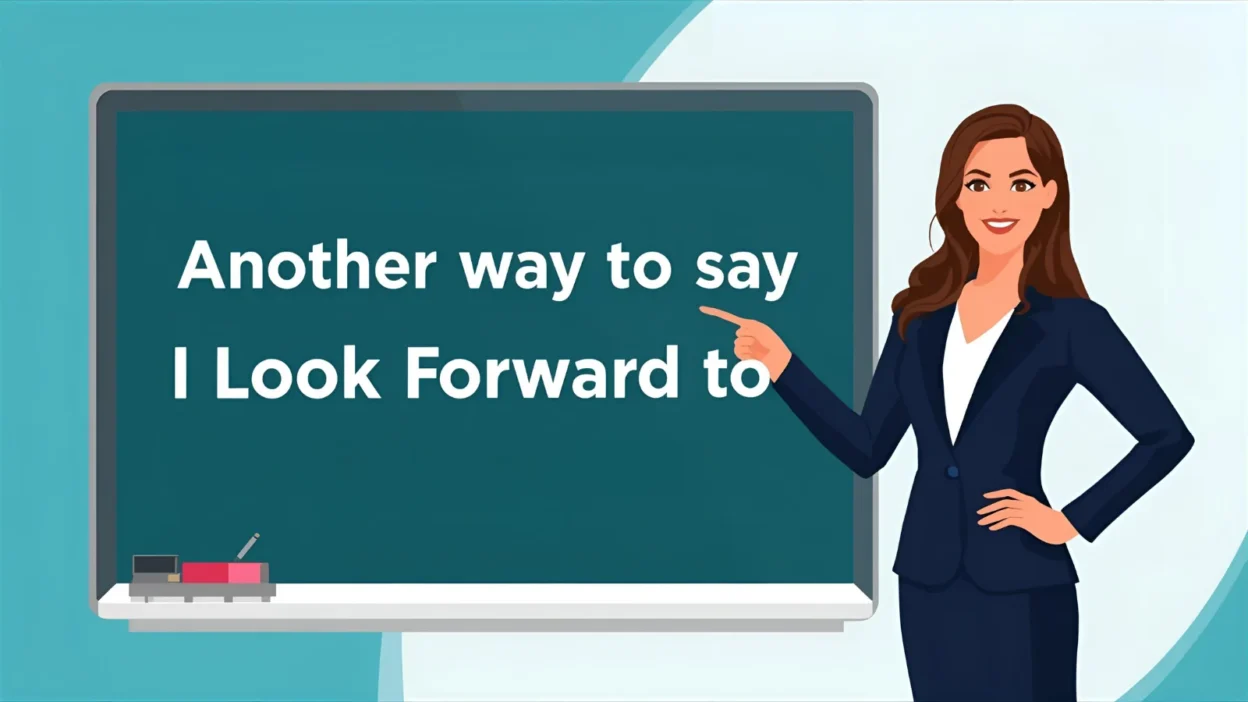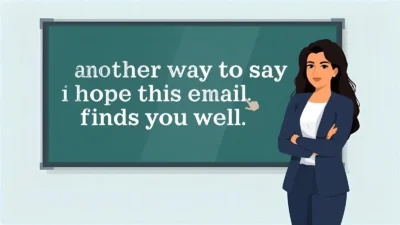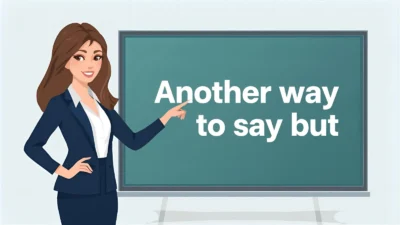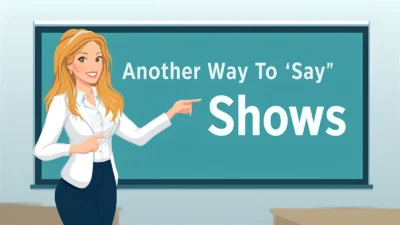The phrase “I look forward to” is commonly used in emails, letters, and conversations to express anticipation or eagerness for something in the future. While it’s polite and professional, it can sometimes feel overused or repetitive in formal communication. By using different alternatives, you can adjust the tone—whether warm, professional, or casual—while still showing enthusiasm.
In this article, you’ll discover 45 different ways to say “I look forward to” with meanings, explanations, examples, best use cases, and tone descriptions.
1. I’m Excited About
Meaning: Express enthusiasm for a future event.
Explanation: Warm and energetic.
Example: “I’m excited about working on this project with you.”
Best Use: Professional yet friendly communication.
Tone: Positive, approachable.
2. I Anticipate
Meaning: Expecting something to happen.
Explanation: More formal than “I look forward to.”
Example: “I anticipate your response to my application.”
Best Use: Business and academic writing.
Tone: Formal, professional.
3. I’m Looking Ahead To
Meaning: Express anticipation of something coming.
Explanation: Slightly more casual variation.
Example: “I’m looking ahead to our next meeting.”
Best Use: Friendly emails or conversations.
Tone: Neutral, friendly.
4. I’m Eager To
Meaning: Showing strong enthusiasm.
Explanation: Conveys genuine excitement.
Example: “I’m eager to get started on the collaboration.”
Best Use: Motivational, workplace communication.
Tone: Positive, proactive.
5. I Await
Meaning: Formal way of expressing expectation.
Explanation: Short and serious.
Example: “I await your instructions.”
Best Use: Professional letters, formal writing.
Tone: Formal, concise.
6. I’m Keen On
Meaning: Enthusiastic about something.
Explanation: More common in British English.
Example: “I’m keen on learning more about your proposal.”
Best Use: Semi-formal writing, international business.
Tone: Professional, slightly casual.
7. I’m Anxious To
Meaning: Strong desire (though can imply nervousness).
Explanation: Works well in certain contexts.
Example: “I’m anxious to see the final results.”
Best Use: Personal or casual communication.
Tone: Emotional, enthusiastic.
8. I’m Thrilled About
Meaning: Extremely excited.
Explanation: Stronger than “excited.”
Example: “I’m thrilled about the opportunity to join your team.”
Best Use: Personal statements, job applications.
Tone: Very positive, enthusiastic.
9. I Can’t Wait To
Meaning: Informal way of expressing eagerness.
Explanation: More casual but enthusiastic.
Example: “I can’t wait to catch up next week.”
Best Use: Friendly or casual exchanges.
Tone: Informal, upbeat.
10. I’m Hopeful For
Meaning: Optimistic anticipation.
Explanation: Suggests positivity and expectation.
Example: “I’m hopeful for a positive response.”
Best Use: Professional emails, polite requests.
Tone: Optimistic, professional.
11. I’m Happy To Anticipate
Meaning: Express pleasure in expecting something.
Explanation: Polite and formal.
Example: “I’m happy to anticipate our upcoming discussion.”
Best Use: Business correspondence.
Tone: Polite, formal.
12. I’m Expecting
Meaning: Awaiting an outcome.
Explanation: A bit direct but professional.
Example: “I’m expecting to hear from you soon.”
Best Use: Formal or professional contexts.
Tone: Direct, professional.
13. I’m Enthusiastic About
Meaning: Expressing passion or excitement.
Explanation: Stronger than neutral anticipation.
Example: “I’m enthusiastic about contributing to this project.”
Best Use: Cover letters, teamwork.
Tone: Motivated, positive.
14. I Hope To
Meaning: Expressing desire with modesty.
Explanation: Softer than “look forward to.”
Example: “I hope to work with you again soon.”
Best Use: Professional or personal.
Tone: Humble, polite.
15. I Welcome the Opportunity To
Meaning: Appreciation for future collaboration.
Explanation: Very formal and professional.
Example: “I welcome the opportunity to discuss this further.”
Best Use: Business meetings, job interviews.
Tone: Professional, respectful.
16. I’m Ready For
Meaning: Prepared for what’s coming.
Explanation: Adds determination to anticipation.
Example: “I’m ready for the next challenge.”
Best Use: Motivational and workplace contexts.
Tone: Confident, proactive.
17. I’m Grateful For the Chance To
Meaning: Shows appreciation and anticipation.
Explanation: Combines gratitude with expectation.
Example: “I’m grateful for the chance to present my ideas.”
Best Use: Formal communication, interviews.
Tone: Appreciative, formal.
18. I’m Delighted At the Prospect Of
Meaning: Happy and optimistic about something.
Explanation: Formal but warm.
Example: “I’m delighted at the prospect of working with your team.”
Best Use: Polite business writing.
Tone: Warm, formal.
19. I’m Ready and Excited To
Meaning: Enthusiastic and prepared.
Explanation: A mix of readiness and energy.
Example: “I’m ready and excited to begin our collaboration.”
Best Use: Workplace motivation.
Tone: Energetic, positive.
20. I Anticipate With Pleasure
Meaning: Formal way to express pleasant expectation.
Explanation: Slightly old-fashioned but elegant.
Example: “I anticipate with pleasure our upcoming partnership.”
Best Use: Formal letters, business communication.
Tone: Polite, refined.
21. I’m Glad For the Opportunity To
Meaning: Positive expression of anticipation.
Explanation: Shows gratitude and excitement.
Example: “I’m glad for the opportunity to meet you in person.”
Best Use: Semi-formal business settings.
Tone: Warm, polite.
22. I Eagerly Await
Meaning: Very enthusiastic and formal.
Explanation: Stronger and more formal than “I await.”
Example: “I eagerly await your decision.”
Best Use: Job applications, formal letters.
Tone: Professional, respectful.
23. I’m Optimistic About
Meaning: Positive outlook on what’s coming.
Explanation: Encourages confidence and hope.
Example: “I’m optimistic about the results of our efforts.”
Best Use: Professional or casual contexts.
Tone: Encouraging, hopeful.
24. I Can Hardly Wait For
Meaning: Strong eagerness.
Explanation: More emotional than professional.
Example: “I can hardly wait for the concert.”
Best Use: Informal, personal conversations.
Tone: Excited, casual.
25. I’m Prepared For
Meaning: Ready and expecting.
Explanation: Neutral but confident.
Example: “I’m prepared for our upcoming presentation.”
Best Use: Professional communication.
Tone: Confident, neutral.
Conclusion
The phrase “I look forward to” is versatile, but using alternatives helps you adapt your tone to fit the situation. For formal settings, options like “I eagerly await,” “I anticipate,” or “I welcome the opportunity to” work best. For casual conversations, try “I can’t wait to,” “I’m excited about,” or “I’m keen on.” By choosing the right alternative, you can communicate enthusiasm in a way that feels fresh and appropriate.



